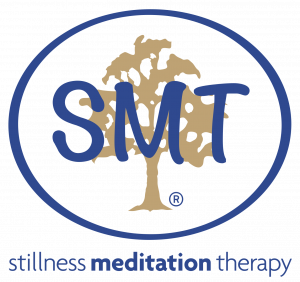Paralyzing panic and other outcomes
Recently I had reason to reiterate to a new client an outline of the effect of anxiety, panic and the outcomes of these reactions. Since there seems to be quite a deal of ignorance about the physiology surrounding anxiety, I decided to talk about it again.
Anxiety is part of our survival. Yet anxiety levels can creep out of control when, via the brain, emergency messages arrive at the nervous system creating distressing symptoms. It is this sequence of events within our body that creates panic to the extent that people may begin to live a life of compromise, founded on fear.
When the brain receives a surge of nervous signals the amygdale, thought to be the fear centre therein, is activated. At that point the body releases from the adrenal glands, the natural chemical, adrenaline (epinephrine). This outcome is extremely powerful in its effectiveness – our ‘fight or flight’ mechanism in action. These days of course, the level of danger that once existed in earlier times is limited but, as a form of natural protection, the brain continues its work even though the signal we are giving it may relate to some far less threatening occurrence. Even a sharp rise in tension for a relatively simple reason can be sufficient to trigger amygdale reaction and a subsequent flood of anxiety if the individual is already fatigued or stressed.
In effect, adrenaline released into an overloaded system has nowhere to go but to alert the body by raising the heartbeat, causing the onset of sweating, creating churning in the stomach or affecting the bowel or bladder or provoking irregular breathing – plus many other alarming symptoms – and so a panic attack occurs.
Panic attacks typically seem to come ‘out of the blue’ but this is an incorrect assumption. Always there has been a gradual build up of stress, tension and exhaustion to precipitate this level of anxiety. Unfortunately though, this is like a plot for the unsuspecting and countless people are regularly caught out by their body’s attempts to control their wellbeing.
There are lots of articles on anxiety and panic these days – some of it valuable and lots of it less so. In fact my book In Stillness Conquer Fear was the first in Australia (and maybe the first anyway) to expose anxiety at a personal level – to expose anxiety for what it really is – and to offer a practical and natural lasting solution. So with 30 years’ experience of self help and then working with other anxiety sufferers, in this month’s blog I’m going to be bold and quote some passages from my own writings.
Firstly, the greatest fear that imposes itself on the unsuspecting anxiety victim is the fear of death.
Panic in full flight, delivering a range of alarming symptoms, gives a very strong impression that death is imminent. And oh, how unprepared is that victim as told in my own account of panic (Chapter 3, In Stillness Conquer Fear):
‘It was a hot, steamy and overcast day, my head was aching and I was very tired. I remember it well … exhausted from a range of duties I rushed off once more. It was as I was driving in rather heavy traffic that I suddenly experienced an unpleasant feeling of unreality. I felt a surge of alarm at this new experience. I remember vaguely thinking that perhaps I had not been concentrating very well on my driving, and almost wanted to pinch myself to see if I was dreaming.”
This feeling of unreality, I learned later, is quite a common symptom of anxiety. However, not knowing that then, I became tense in an attempt to overcome that unpleasant feeling. I then realised that I was feeling extremely unwell. I was giddy and nauseated, my head was pounding, my vision was blurred and my heart was thumping in my throat — and I was still driving the car. I managed to park it and sat there for a few minutes, terribly aware of the fact that I was ill and away from home and I had two very young children with me.
By then, I was also feeling weak and faint, hot and cold and gasping for breath — hyperventilating, so I learned much later. Excessive over-breathing in fright will cause numbness in the hands and limbs, and I then experienced what is medically known as a tetanic spasm which, I thought then, was the sudden onset of paralysis. With all those dramatic sensations happening and the predicament of being responsible for my children, I was convinced that I was dying or certainly being stricken with some dreadful disease.
All my responsibilities seemed to crowd into my thoughts, in particular the two little children still out there in the car. It was a sensational and very frightening experience and I felt, in my confusion, that if I wasn’t dying, I was about to lose control of my reason and actions.’
And so for me – and for many others – the fear of dying, death, being overwhelmed or losing reason dominated for many years – until with good fortune, I learned how to take control of my reactivity, develop natural calm and find relief from the power of negativity.
There are many, many suffering people out there – struggling with anxiety, panic, tension, depression and more. Many of those people will never know how to reverse their predicament, safely, naturally and in a practical and effective way. If you think this blog might help someone else, please circulate it to endorse what we do here at the SMT Centre.
Our commitment and aim is to help others achieve naturally, the quality of life each deserves.

